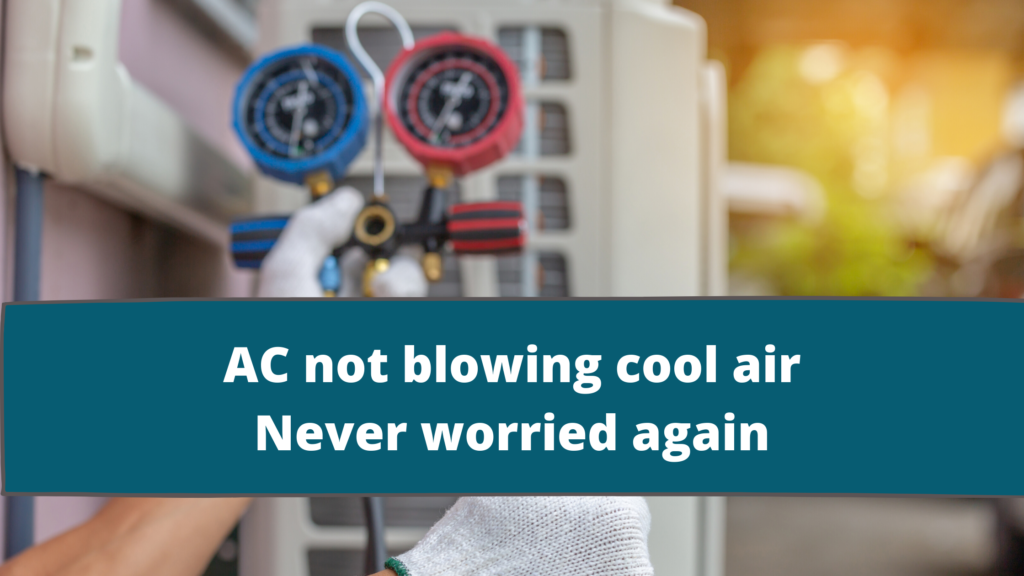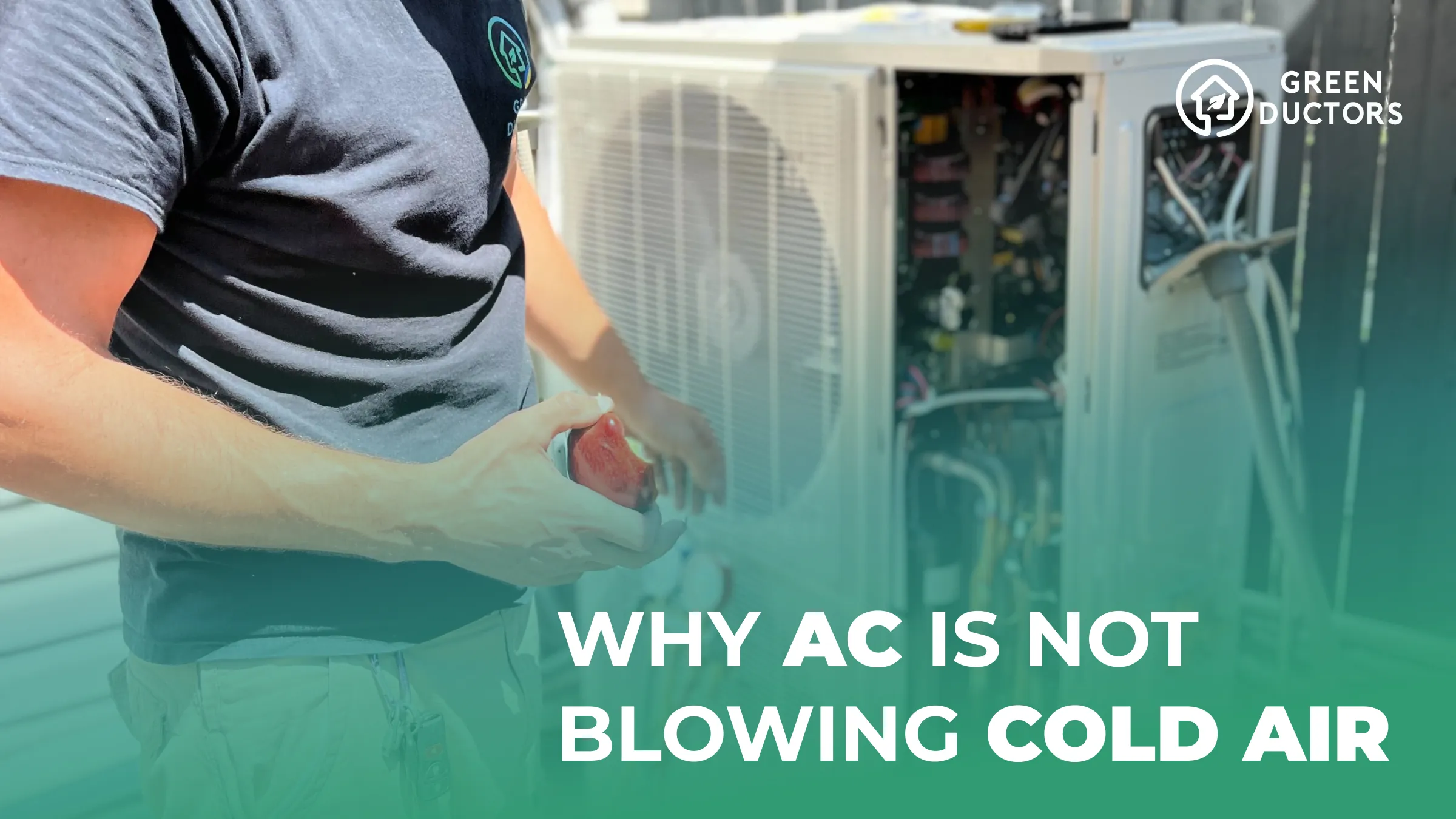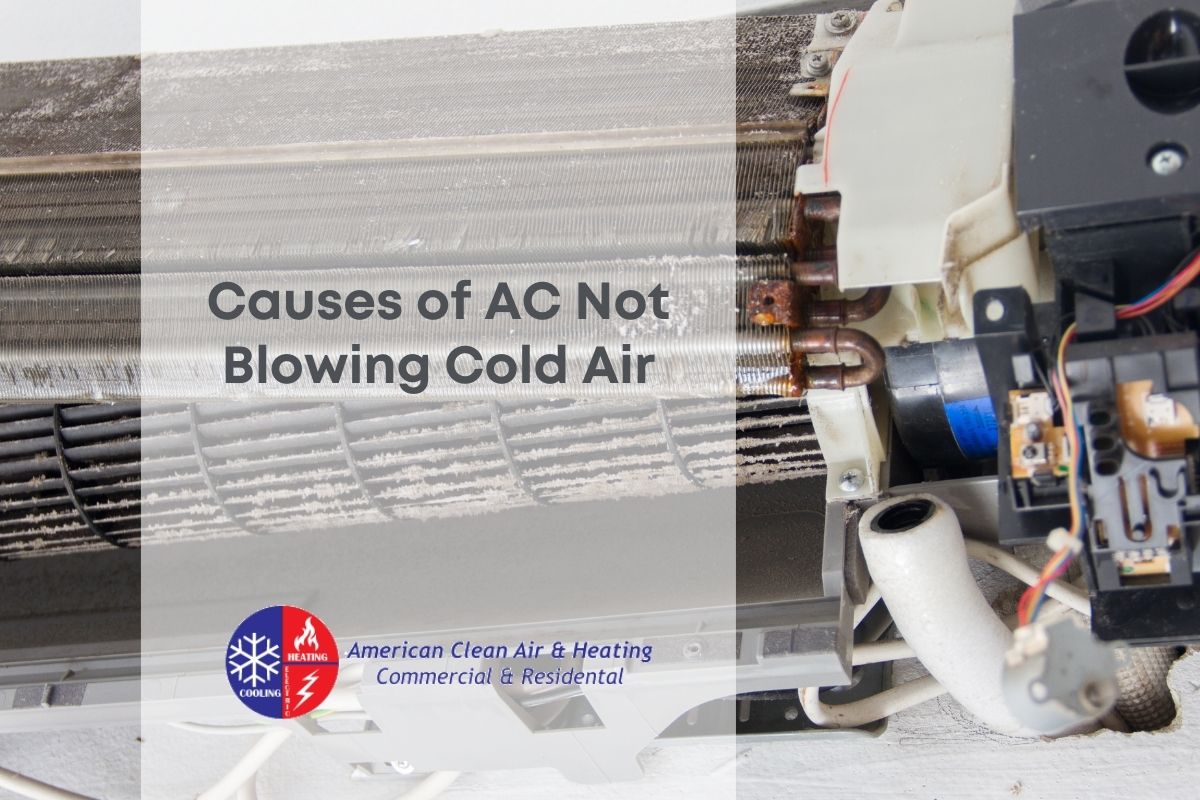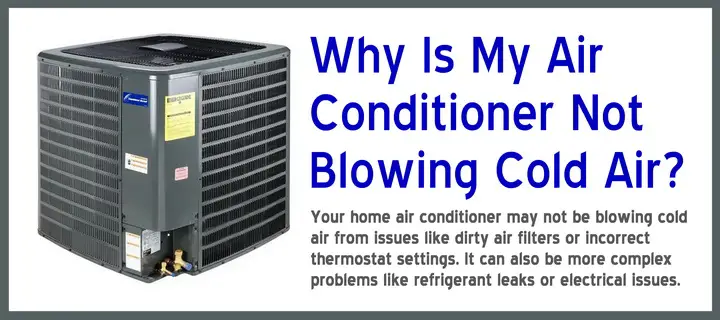Ac Is Working But Not Blowing Cold Air

Why Is My AC Working But Not Blowing Cold Air? Troubleshooting and Solutions for Energy-Efficient Cooling
A central air conditioning system that's running but not producing cold air is a homeowner's or business owner's nightmare, especially during peak summer months. This issue not only results in discomfort but also significantly impacts energy bills and potentially shortens the lifespan of your HVAC system. Understanding the common causes and implementing effective solutions can save you money, improve energy efficiency, and prevent costly repairs.
Common Culprits Behind Warm Air
Several factors can contribute to your AC unit blowing warm air despite seemingly working. Here's a breakdown of the most frequent issues:
1. Refrigerant Leaks
Refrigerant is the lifeblood of your AC system. It absorbs heat from inside your home and releases it outside. A leak, even a small one, can drastically reduce your system's cooling capacity. Low refrigerant levels mean less heat absorption, resulting in warmer air. According to the EPA, refrigerant leaks should be addressed promptly by a certified HVAC technician due to environmental concerns and potential system damage. Detecting a leak often requires specialized equipment and expertise.
"Refrigerant leaks not only compromise cooling performance but also release harmful greenhouse gases into the atmosphere. Addressing leaks promptly is crucial for both environmental protection and energy efficiency." - EPA Guidelines on Refrigerant Management
2. Dirty Air Filter
A clogged or dirty air filter is one of the most common causes of AC inefficiency. The filter's primary function is to trap dust, pollen, and other airborne particles, preventing them from entering the AC unit. When the filter becomes saturated, it restricts airflow. This reduced airflow makes it harder for the system to cool the air effectively and can even cause the evaporator coil to freeze. Energy Star recommends replacing your air filter every 1-3 months, depending on usage and air quality. Using high-efficiency particulate air (HEPA) filters can further improve air quality and system performance. Installing a smart air filter with monitoring capabilities can alert you when it's time for a change, optimizing both air quality and HVAC efficiency.
3. Frozen Evaporator Coil
The evaporator coil, located inside your indoor unit, is responsible for absorbing heat from the air. When airflow is restricted (due to a dirty air filter or other obstructions), the coil can become too cold and freeze. Ice buildup insulates the coil, preventing it from effectively absorbing heat. Signs of a frozen evaporator coil include reduced airflow, warm air blowing from the vents, and visible ice on the indoor unit. Thawing the coil typically involves turning off the AC unit and allowing the ice to melt naturally, which can take several hours. Addressing the underlying cause of the freezing (e.g., replacing the air filter) is essential to prevent recurrence.
4. Condenser Unit Problems
The condenser unit, located outside your home, releases heat absorbed by the refrigerant. Obstructions around the condenser unit, such as overgrown vegetation or debris, can restrict airflow and reduce its ability to dissipate heat. This can lead to overheating and reduced cooling performance. Regularly clearing the area around the condenser unit and ensuring adequate ventilation are crucial for optimal performance. Additionally, the condenser fan motor might be faulty, preventing proper heat dissipation. Inspect the condenser fan to make sure it’s running. If it's not, you'll need to call a professional for repair or replacement.
5. Ductwork Leaks
Leaky ductwork can result in significant energy loss. Conditioned air escapes through cracks and holes in the ductwork before it reaches the vents, leading to uneven temperatures and increased energy bills. Sealing ductwork with mastic sealant or metal tape can improve energy efficiency by as much as 20%, according to the Department of Energy. Consider hiring a professional to conduct a ductwork inspection and sealing service to identify and address any leaks. Smart home systems can integrate with pressure sensors in ductwork to identify and alert you to pressure drops indicative of a leak.
6. Compressor Issues
The compressor is the heart of your AC system, responsible for circulating refrigerant. A failing compressor can lead to a complete loss of cooling capacity. Compressor issues can be caused by overheating, electrical problems, or wear and tear. Diagnosing compressor problems requires specialized knowledge and equipment. If you suspect a compressor issue, it's best to consult with a qualified HVAC technician. Replacing a compressor can be a significant expense, so it's important to consider the age and overall condition of your AC unit before making a repair decision.
7. Electrical Problems
Electrical issues, such as a tripped circuit breaker, a blown fuse, or a faulty capacitor, can prevent the AC unit from functioning properly. Check your circuit breaker panel to ensure that the AC circuit is not tripped. If a fuse is blown, replace it with a fuse of the correct amperage. A failing capacitor can prevent the fan motor or compressor from starting. Capacitors can be dangerous to handle, so it's best to leave capacitor replacement to a qualified HVAC technician.
Troubleshooting Steps You Can Take
Before calling a professional, there are several troubleshooting steps you can take to identify and potentially resolve the issue:
- Check the Thermostat: Ensure that the thermostat is set to "cool" mode and that the temperature is set lower than the current room temperature. Make sure the batteries are working if applicable. Smart thermostats offer precise temperature control and energy usage monitoring.
- Inspect the Air Filter: Remove and inspect the air filter. If it's dirty, replace it with a clean filter.
- Clear Obstructions: Check the outdoor condenser unit for any obstructions, such as overgrown vegetation or debris. Clear away any obstructions to ensure adequate airflow.
- Check the Circuit Breaker: Inspect the circuit breaker panel to ensure that the AC circuit is not tripped. Reset the breaker if necessary.
- Inspect Vents: Make sure your supply vents are not obstructed by furniture, drapes, or other objects.
When to Call a Professional
If you've tried the troubleshooting steps above and your AC unit is still blowing warm air, it's time to call a qualified HVAC technician. Some issues, such as refrigerant leaks, compressor problems, and electrical issues, require specialized knowledge and equipment to diagnose and repair. Attempting to repair these issues yourself can be dangerous and may void your warranty.
Energy-Efficient Solutions and Upgrades
If your AC unit is old or inefficient, consider upgrading to a more energy-efficient model. New AC units are designed with advanced technologies that can significantly reduce energy consumption and lower your energy bills. Look for units with a high Seasonal Energy Efficiency Ratio (SEER) rating. Energy Star certified AC units meet strict energy efficiency guidelines and may qualify for rebates and incentives.
"Upgrading to an Energy Star certified AC unit can reduce your energy consumption by 20-40% compared to older models." - Energy Star Program Guidelines
Smart HVAC Integration
Integrating your HVAC system with a smart home system can further enhance energy efficiency and convenience. Smart thermostats allow you to control your AC unit remotely, set custom schedules, and monitor energy usage. Smart sensors can detect room occupancy and adjust the temperature accordingly, optimizing energy savings. Many utility companies offer rebates and incentives for installing smart thermostats and other energy-efficient devices.
Ductless Mini-Split Systems
Ductless mini-split systems are an energy-efficient alternative to traditional central air conditioning systems. These systems consist of an outdoor condenser unit and one or more indoor air handlers. Ductless mini-split systems are easy to install and offer zone cooling, allowing you to control the temperature in individual rooms. They are also more energy-efficient than central AC systems because they don't have ductwork, which eliminates the risk of ductwork leaks.
ROI and Energy Savings
Investing in energy-efficient HVAC solutions can provide significant ROI in the long run. While the initial cost of upgrading to a new AC unit or installing a smart home system may seem high, the energy savings can quickly offset the cost. A new, high-efficiency AC unit can reduce your energy bills by hundreds of dollars per year. Smart thermostats and sensors can further reduce energy consumption by optimizing temperature control and eliminating wasted energy. Furthermore, maintaining your AC system with regular maintenance, such as replacing air filters and cleaning the condenser unit, can extend its lifespan and prevent costly repairs.
Government Rebates and Incentives
Many government agencies and utility companies offer rebates and incentives for installing energy-efficient HVAC equipment. These rebates can help offset the cost of upgrading to a new AC unit or installing a smart home system. Check with your local utility company and state energy office to learn about available rebates and incentives. The federal tax credit for energy-efficient home improvements can also provide significant savings.
Conclusion
An AC unit that's working but not blowing cold air can be a frustrating and costly problem. By understanding the common causes, taking the troubleshooting steps outlined above, and investing in energy-efficient solutions, you can improve your AC system's performance, lower your energy bills, and create a more comfortable and sustainable home or business environment. Don't hesitate to contact a qualified HVAC technician for professional assistance when needed. Regular maintenance, combined with smart technology integration, ensures optimal performance and maximum energy savings.










